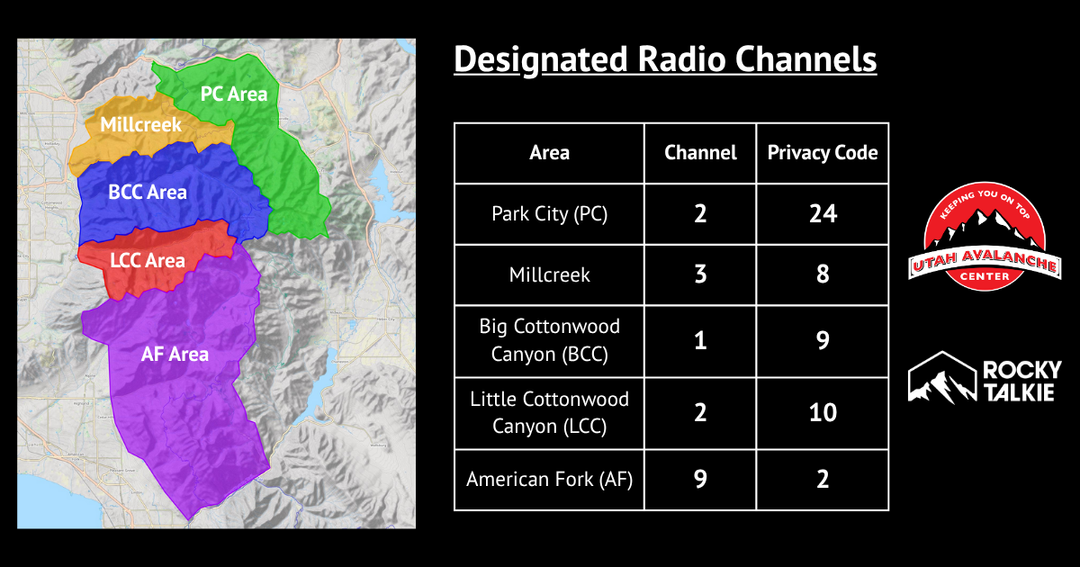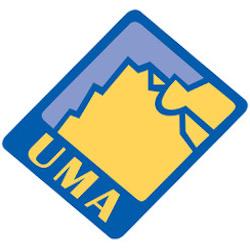Wasatch Backcountry Group Monitoring Channels
It is well know that having a beacon, shovel, and probe are essential tools for anyone who is entering the backcountry, but what about two-way radios? While not essential, using radios with your backcountry party can greatly improve communication to reduce risk, find better riding conditions, and facilitate rescue operations.
With the number of backcountry users in the Wasatch rapidly increasing, there has been a steady push to improve effective group-to-group communication. A higher density of users means an increased risk of parties riding on top of each other. The idea of using common channels to communicate between groups began with the Telluride Mountain Club in 2014, and has been recreated in many other high-use backcountry areas. Using pre-defined Group Monitoring Channels allows groups to communicate when entering in, traveling through, and exiting potentially exposed terrain.
Intended Uses and Radio Protocols:
Two-way radios are important communication tools to manage risk in the backcountry. When using the Group Monitoring Channels it's important that only important information is relayed to avoid extra noise. These channels should not be used for communication between your party, but monitored before and after entering exposed terrain. Intended uses include:
- To announce your "drop in" and find out if other parties are in terrain below you.
- To announce your "all clear" when you are exiting a specific line or piece of terrain.
- To alert your group and other groups about hazards, such as changing conditions or avalanches.
- Send a distress call for assistance in case of an accident if 911 can't be reached directly.

Regional Group Monitoring Channels-
- Park City Ridgeline/Highway 224: Channel 2 Privacy Code 24
- Millcreek Canyon/ Neffs Canyon: Channel 3 Privacy Code 8
- Big Cottonwood Canyon/Highway 190: Channel 1 Privacy Code 9
- Little Cottonwood Canyon/Highway 210: Channel 2 Privacy Code 10
- American Fork Canyon/Highway 92: Channel 9 Privacy Cod 2
- Rescue Channel (when a rescue is underway): Channel 9 Code 11
*Note: Most radios used in the backcountry (Rocky Talkie, BCA) are CTCSS compatible, meaning the privacy code is the same even if your partners are using a different brand of radio. Radios that don't have CTCSS compatibility can be programmed to the correct frequency using the chart found at https://wiki.radioreference.com/index.php/Family_Radio_Service



